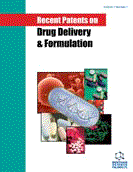Abstract
Pluripotent stem cells hold unprecedented potential for regenerative medicine, disease modeling and drug screening. Embryonic stem cells (ESCs), standard model for pluripotency studies, have been recently flanked by induced pluripotent stem cells (iPSCs). iPSCs are obtained from somatic cells via epigenetic and transcriptional reprogramming, overcoming ESC-related ethical issues and enabling the possibility of donor-matching pluripotent cell lines. Since the European Court of Justice banned patents involving embryo disaggregation to generate human ESCs, iPSCs can now fuel the willingness of European companies to invest in treatments based on stem cells. Moreover, iPSCs share many unique features of ESCs, such as unlimited self-renewal potential and broad differentiation capability, even though iPSCs seem more susceptible to genomic instability and display epigenetic biases as compared to ESCs. Both ESCs and iPSCs have been intensely investigated for cardiomyocyte production and cardiac muscle regeneration, both in human and animal models. In vitro and in vivo studies are continuously expanding and refining this field via genetic manipulation and cell conditioning, trying to achieve standard and reproducible products, eligible for clinical and biopharmaceutical scopes. This review focuses on the recently growing body of patents, concerning technical advances in production, expansion and cardiac differentiation of ESCs and iPSCs.
Keywords: Cardiac muscle, cardiomyocytes, differentiation, drug screening, ESCs, iPSCs, patent literature, regeneration
 42
42














